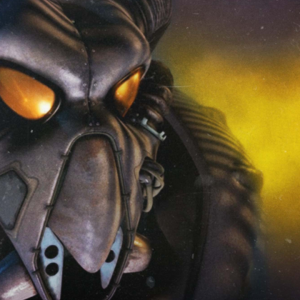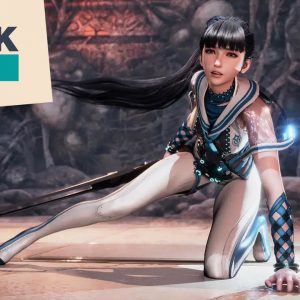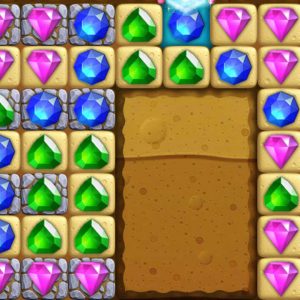Packed with enough gadgets to cover a belt for Batman’s trousers, Like a Dragon Gaiden: The Man Who Erased His Name returns to the classic, combo-based street fighting that featured in earlier Yakuza games but enhances it with a fresh technological twist. This time the sharp side of the katana blades aren’t the only things that are on the cutting edge, as returning hero Kazuma Kiryu can employ a suite of state-of-the-art tools for taking out his tormentors as though he’s bypassed the weapons locker in favour of a trip to the Apple store. However, outside of the revitalised combat, almost everything in Gaiden’s toybox feels like a hand-me-down from an older sibling in the series, meaning once the fighting stops it quickly starts to feel a bit too familiar.
So why is the Dragon of Dojima suddenly kitted out with hi-tech gizmos like a Japanese James Bond? Well, it’s because this time around he’s gone undercover as an agent for the Daidoji crime family, returning him to one of his old curb-stomping grounds in Sotenbori and forcing him to adopt the pseudonym ‘Joryu’ in order to protect his true identity. Somewhat hilariously, almost nobody you meet over the course of his investigation into the Omi Alliance crime syndicate buys into the ruse, possibly due to the fact that Kiryu’s half-arsed attempt at disguise begins and ends with donning a pair of glasses like he’s a karate-kicking Clark Kent. In fact, he stood out even more so when I used the in-game tailoring tool to clad him in an ostentatious golden suit that made him look like C-3P0 on his way to a court appearance.
Even so, despite the fact Kiryu is about as good at remaining undercover as my feet are on a hot summer’s night, what follows is yet another tense tale of modern Japanese crime with all the generous helpings of betrayals and brutal murder we’ve come to expect from this series, building towards a customary climax where everyone angrily rips their shirts off and you’re going toe-to-toe with a burly boss who’s packing more health bars than a bodybuilder’s gym bag.
Admittedly, with just five chapters that took me around 12 hours to complete, Gaiden’s story is a little on the short side compared to previous Yakuza games, but I actually appreciated the more focussed framing of its plot. Amidst all the bloodletting, it also presents a deeper insight into Kiryu’s character and his very personal motivations for heading to Hawaii for next year’s turn-based RPG, Like a Dragon: Infinite Wealth. Although he may appear to be a one-dimensional brute to the untrained eye, Kiryu spends just as much time cracking street punk skulls in Gaiden as he does beating himself up for the mistakes he’s made in the past, and as a longterm fan of the series I’ve never felt more endeared to him. I’m thankful that developer Ryo Ga Gotoku Studio seems just as reluctant to let Kiryu go as I do.
Live and Let Fly
Like a Dragon’s poster boy pugilist has long been a master of various forms of mixed martial arts, but in Gaiden his repertoire has been augmented by an ingenious arsenal of tech toys that grows across Gaiden’s first half. Kiryu’s new ‘Agent’ fighting stance allows him to pull tricks like calling in a horde of drones to distract enemies so that they’re too busy swatting away the buzzing nuisances to notice the flurry of his incoming fists, or lassoing multiple foes with glowing webs fired from his wrist and whipping them off their feet like he’s a street-fighting Spider-Man. The latter can also be used to quickly retrieve weapons and items from the ground during a fight, although I found the button prompt to do so only appeared intermittently so I couldn’t always rely on it in the heat of battle.
These gizmos don’t really do enough damage on their own to the point that they can be abused, but rather they accentuate Kiryu’s more traditional punches and kicks and bring some welcome spectacle and strategic flexibility to each scrap. For example, I made a habit of kicking off each battle by calmly flicking one of Kiryu’s explosive cigarettes towards a cluster of oncoming attackers, with the subsequent blast spreading the goons across the battle arena and better isolating them to be picked off one by one. Any time I came up against the pesky pistol-toting gangsters that would take potshots at me from the far perimeter of each fight, I’d use Kiryu’s rocket-propelled loafers to swiftly skate through the crowd and close the gap to take them out before they could chamber another round.
Agent provides a fast, flashy, and consistently fun form of spy-kwan-do, but it’s not the only stance at Kiryu’s disposal. He can also switch to the more traditional ‘Yakuza’ fighting style, which delivers many of the greatest hits, kicks, and traffic-cone-to-the-face-smashes selected from Kiryu’s extensive back catalogue of beatdowns. Although it’s considerably more old-fashioned than the bleeding-edge battles of Agent, I found that this more deliberate and damaging stance allowed me to more efficiently mop up the dregs in smaller groups or get maximum bang for my buck during the more imposing boss encounters.
Additionally, I found the timing window of the new ‘ultimate counter’ moves in either stance to be generous enough that I was better able to successfully parry the glowing, powered-up attacks of the beefier assailants than I have ever been in the series before, and Kiryu’s ability to sidestep incoming attacks felt as fluid as it’s ever been. With only two styles, Gaiden might not provide the most diverse fighting system in the series, but it’s certainly one of the most dynamic, and I still felt well equipped to take on anything that its combat threw at me.Casino Battle Royale
Outside of Kiryu’s spectacular, technology-enhanced combat takedowns, though, Gaiden doesn’t really feature much in the way of spy-centric gameplay. Unlike the detective story spin-off Judgment, which introduced unique investigative tools and the use of disguises to progress through many of its story objectives, Gaiden just feels like an atypical Like a Dragon adventure with some slightly snazzier ways to lay the smackdown on street thugs. Main story missions are certainly action-packed but few of them are novel enough to really stick in the memory, and the substories – which take the form of special tasks for a clandestine information network – mostly shuffle through the same base set of fetch quests and repeated rifts with rival gangs, with only a handful that take a genuinely surprising left turn.
The Castle, a floating casino disguised behind a towering wall of containers on a cargo ship that’s central to Gaiden’s plot, provides a dazzling alternative destination to visit away from the main Sotenbori sprawl, but there’s not that much to actually do on it that I haven’t experienced in the series several times over at this point. There’s gambling in both western and traditional Japanese forms, as well as the now-customary underground fighting tournament to smash your way through. But although the heavily populated ‘Hell Team Rumble’ brawls held in the Castle’s Coliseum provided a few enjoyably chaotic clashes, my reward for working my way through them up to Platinum Fighter status was just gaining access to high-stakes versions of the same casino minigames I was already ignoring.
Elsewhere, I was happy to see the billiards minigame featured in earlier Yakuza games return here, but my enthusiasm for it quickly wore off when I discovered its annoyingly twitchy and imprecise control system. I also failed to muster up the energy to hunt down the dozen Master System cartridges hidden throughout the environment after I realised they were the exact same set of 8-bit classics that I’d already spent time searching for in 2021’s Lost Judgment.
In fact, from slot car racing to karaoke, there are few diversions to be found in Gaiden’s map that haven’t just been rehashed from earlier games, with perhaps one notable and slightly awkward exception: the new ‘immersive’ cabaret clubs. Attempting to chat up hostesses isn’t entirely new to the series, however the fact that these virtual objects of desire are now played by actual live action actresses makes the whole undertaking seem substantially more, shall we say, confronting. (Not unlike the live chat girls in Yakuza 6: The Song of Life‘s internet cafe.) I’m no prude, nor am I passing judgment on folks who find this sort of thing appealing, but as someone who shares a home with a wife and two children… let’s just say that I tried it once and then immediately quit out of it for fear of getting busted – a bit like Grandpa Simpson walking into the Maison Derrière and immediately grabbing his hat off the hatstand and spinning on his heels.
The bottom line is that, beyond trying out some more of the optional substories and Coliseum fights after I’d completed the main story, I just didn’t feel as enticed to extend my stay in Gaiden’s world as I have in previous adventures. Kiryu might be living a double life, but the rest of us only live once; I ultimately didn’t feel like it was a good use of my time to retread so much of the same turf this time around.























